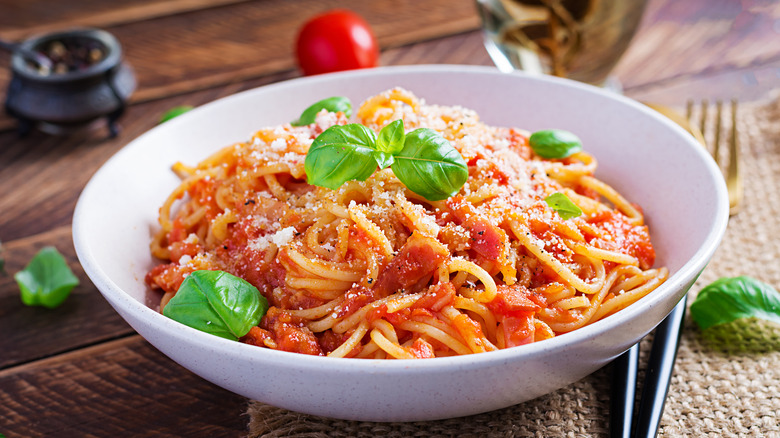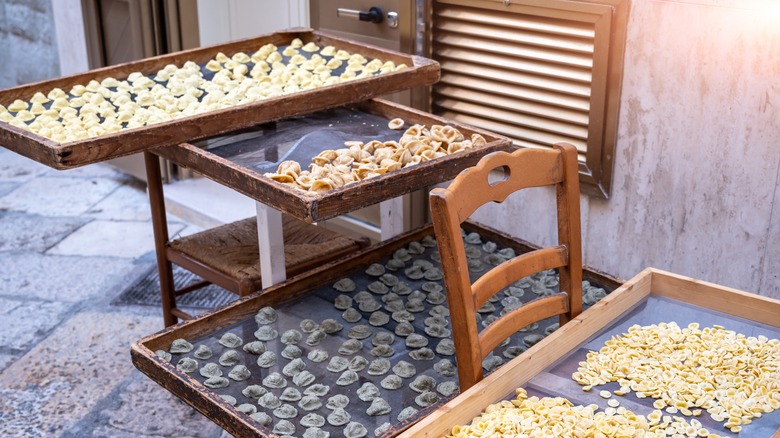Pasta Vs. Sauce: What Came First?
Every culture has found some way to use wheat, grind it, and combine it with water to create foods found across cultures and continents. It's why there's both naan and pita, roti and tortilla, lavash and matzah. The same goes for any kind of noodle — udon, dao xiao mian, spaetzle, spaghetti. What you put on the noodle depends on where you are in the world. The classic Italian food pairing of pasta and tomato sauce is both more ancient and more modern than you might think.
We know that tomatoes were brought to Europe by the Spanish Conquistadors in the 1500s, but exactly how the fruit made its way to Italy is more of a mystery. Regardless, Cosimo de' Medici had tomatoes in his gardens in Pisa in 1548, more as a show of wealth and botanical curiosity than actual foodstuff. No one wanted to eat a tomato — it was viewed as unhealthy, maybe even dangerous. The earliest source for a tomato sauce recipe is from 1694 when a Neapolitan chef named Antonio Latini published it in "Lo Scalco alla Moderna," or "The Modern Steward," according to CNN. The sauce, made of onions, tomatoes, and herbs, was first paired with tough cuts of meat — not pasta. The acidity of tomatoes works wonders for tenderizing meat — think of braising short ribs in a rich tomato sauce for a ragú.
So where does pasta fit into all this? Unlike the chicken and the egg debate, we have a definitive answer on which came first.
There is evidence of pasta-eating from the 4th century B.C.
Right off the bat, no, Marco Polo didn't bring pasta to Italy after having explored the Far East, even though the myth is pervasive amongst blogs and media. There is archaeological evidence of pasta eating amongst the Etruscans, an ancient group who lived in what is present-day Tuscany, in the 4th century B.C., around the same time Alexander the Great was traipsing around the Mediterranean. Archaeologists found a bas-relief sculpture showing tools and utensils very similar to those used by your nonna on a Sunday. The Renaissance, like with a lot of things, elevated pasta to a staple in places like Rome and Florence, per DeLallo, becoming a staple in Neapolitan diets by the late 17th century. It was considered beggar's food, but was also a favorite amongst the upper classes, with the Neapolitan king forgoing utensils and just eating it with his hands. As for preparation methods, pasta was eaten in a way we wouldn't recognize today — boiled for an hour then mixed with grated cheese, butter, sugar, cinnamon, and provatura, a Roman mozzarella, and baked ... sounds delicious.
Tomato sauce wasn't paired with pasta until the mid-19th century, with a recipe for spaghetti and tomato sauce emerging in 1844, per National Geographic. Italian immigrants brought their cuisine along to America in the late 19th century where it became a staple, and the rest, as they say, is history.

